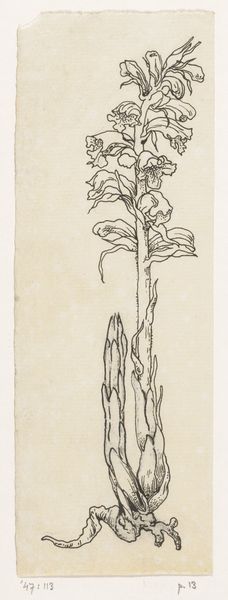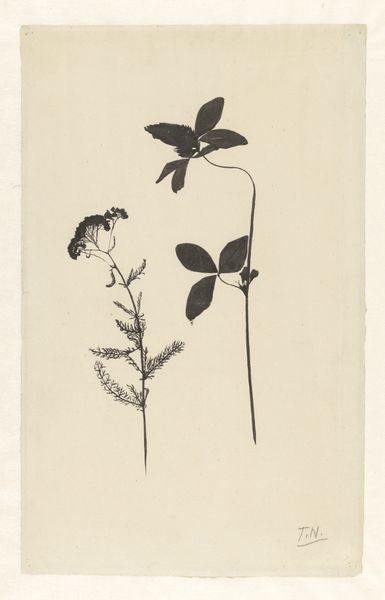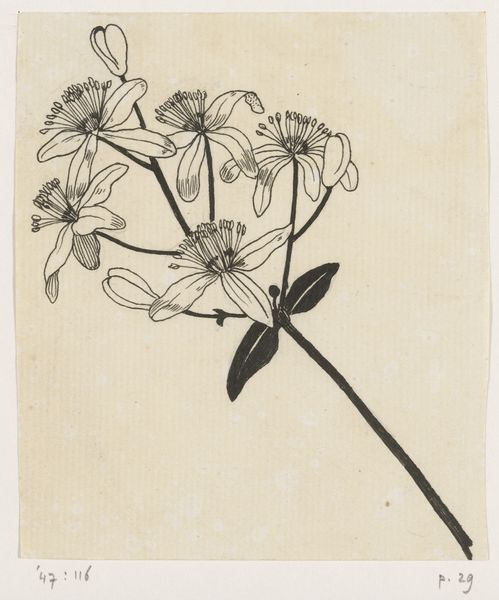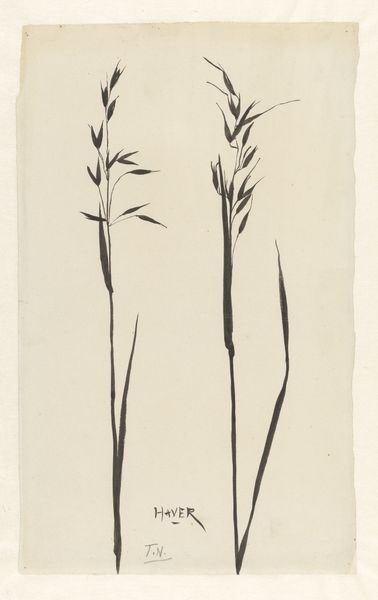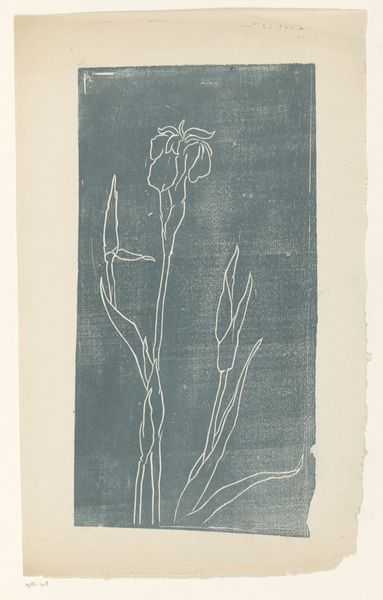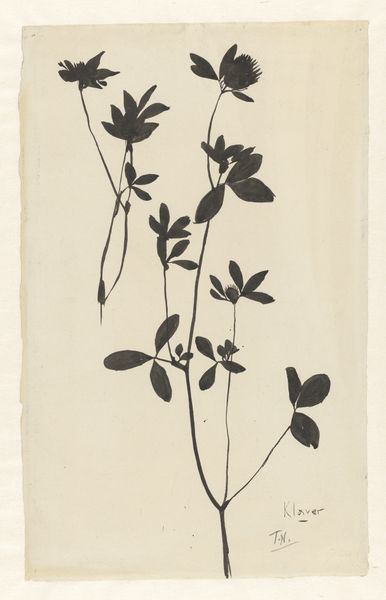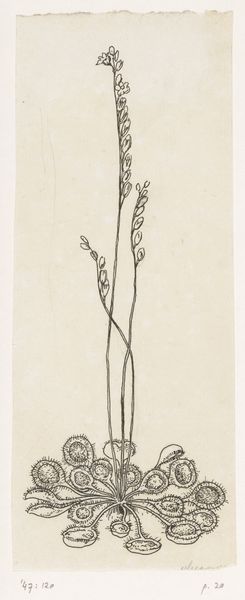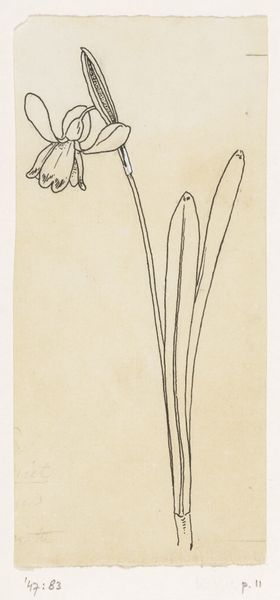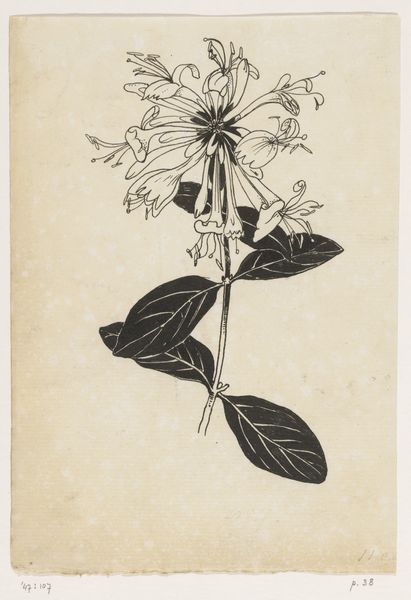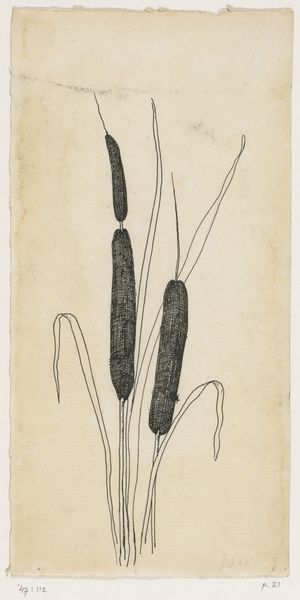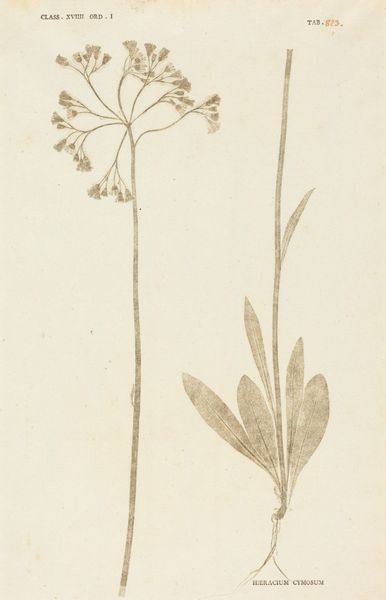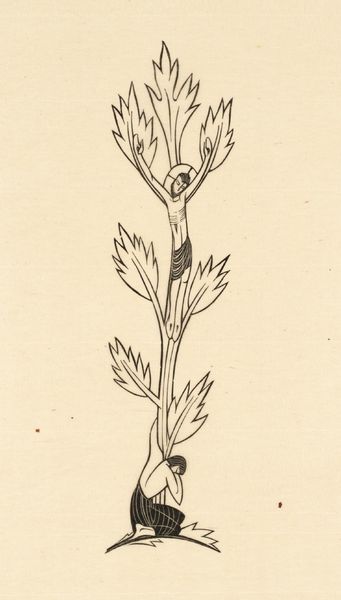
drawing, paper, ink, pen
#
drawing
#
pen sketch
#
flower
#
paper
#
ink
#
pen-ink sketch
#
line
#
pen
#
realism
Dimensions: height 136 mm, width 64 mm
Copyright: Rijks Museum: Open Domain
Curator: I’d like to introduce you to Willem Wenckebach’s “Pinksterbloem,” a pen and ink drawing on paper, created sometime before 1893. It resides here at the Rijksmuseum. Editor: My initial impression is one of delicate simplicity. The stark contrast between the black ink and the white paper gives it a very clean, almost botanical illustration feel. It feels more like a carefully executed study than a grand statement. Curator: Precisely. When we look at Wenckebach’s wider body of work, what becomes evident is his commitment to craftsmanship. The drawing itself is simple; the method of execution brings a new value to what is presented. Note how he doesn’t overly embellish, allowing the stark contrast and line quality to do the talking. His work across paintings, drawings and etchings reflects how artists engaged with varied production processes. Editor: It reminds me that even botanical art has never been apolitical. While it celebrates nature, it also reflects power structures. Think about how colonial botanical expeditions collected, classified, and often exploited plant life and Indigenous knowledge systems, or simply how land use becomes regulated and certain species prioritized due to classist concepts. Does this bloom represent a specific landscape, perhaps even a territory impacted by unequal relationships? Curator: An important question! Wenckebach lived through a period of massive industrial expansion. It's tempting to consider this drawing a quiet contrast, or perhaps even a gentle commentary on nature. It feels handmade, intentional – everything mass-produced items were not. Editor: Yes, but how might class factor into our reading? Is this rendering reflecting middle class values in rendering florals while the factory workers are making textiles with cheap and likely poisonous dyes that mimic botanical dyes from another continent? Curator: That's a complex but valuable consideration, especially as botanical drawings would become easily replicable designs for consumer objects, such as textiles. Editor: Viewing it today, "Pinksterbloem" evokes a sense of thoughtful elegance, making us reflect on the intersection of science, craft, and societal issues imbedded in floral displays. Curator: For me, it’s the careful hand and deliberate strokes that keep me returning to it, reflecting the artist’s commitment to his practice.
Comments
No comments
Be the first to comment and join the conversation on the ultimate creative platform.
